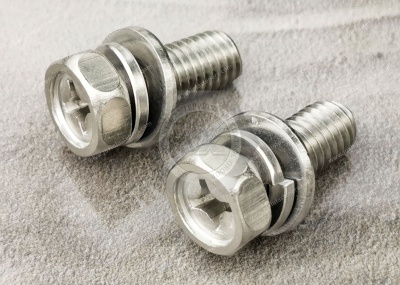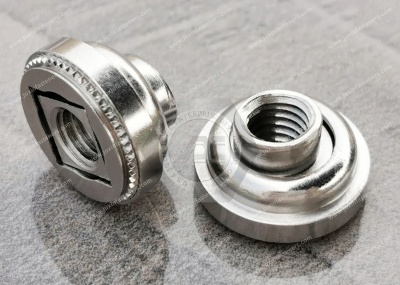Call Us
+86 136 6007 9809
Call Us
+86 136 6007 9809
Jul. 09, 2024
The importance of passivation treatment of stainless steel screws
Passivation treatment of stainless steel screws
Stainless steel screw passivation treatment, mainly to prevent stainless steel corrosion, rust, to maintain its original properties and functions. Passivation treatment is the use of chemical principles, the surface of the stainless steel screws to generate a dense layer of oxide film. This layer of the oxide film can effectively isolate the air and other corrosive substances and stainless steel screws in contact to achieve the purpose of rust, slow down the aging rate of stainless steel screws, to extend the service life.
The importance of passivation treatment
Stainless steel screws have the following advantages after passivation treatment:
1. Good corrosion resistance: stainless steel screws, after passivation treatment, are the surface of the formation of a layer of oxide film; this layer of oxide film has good corrosion resistance and can effectively prevent the stainless steel screws from being corrupted.
2. Extend the service life: after passivation treatment of stainless steel screws, its service life is significantly higher than the untreated stainless steel screws. this is mainly because the passivation film can effectively slow down the aging rate of stainless steel screws,and prevent corrosion and rust, thus extending the service life of stainless steel screws.
3. Improve connection strength: after the passivation of stainless steel screws, its surface smoothness, connection strength, and other properties will be significantly improved.
18-8 Stainless Steel Socket Head Screws: Made from 18-8 stainless steel, these screws have good chemical resistance and may be mildly magnetic. Length is measured from under the head.
Black-oxide stainless steel screws have a matte-black finish. Silver-plated stainless steel screws have mild lubricity, so they thread smoothly. Chrome-plated stainless steel screws have a decorative, mirror-like finish.
Metric screws are also known as A2 stainless steel screws.
Coarse threads are the industry standard; choose these screws if you don’t know the pitch or threads per inch. Fine threads are closely spaced to prevent loosening from vibration. They are not compatible with coarse threads.
Screws that meet ASME B1.1, ASME B18.3, ISO 21269, and ISO 4762 (formerly DIN 912) comply with standards for dimensions. Screws that meet ASTM B456 and ASTM F837 comply with standards for materials.
Super-Corrosion-Resistant 316 Stainless Steel Low-Profile Socket Head Screws: More corrosion resistant than 18-8 stainless steel screws, these 316 stainless steel screws have excellent resistance to chemicals and salt water. They may be mildly magnetic. With half the height of a standard socket head, they fit where space is limited, but their low profile weakens their head. It is not recommended for critical fastening applications. Length is measured from under the head.
Coarse threads are the industry standard; choose these screws if you don’t know the pitch or threads per inch. Fine threads are closely spaced to prevent loosening from vibration. They are not compatible with coarse threads.
Screws that meet DIN 7984 comply with specifications for dimensional standards.
18-8 Stainless Steel Pan Head Phillips Screws:18-8 stainless steel pan head screws have good chemical resistance and may be mildly magnetic. Length is measured from under the head. For partially threaded screws, thread length may vary from the minimum thread length published to fully threaded.
Passivated stainless steel screws provide added protection against oxidation and corrosion.
Chrome-plated stainless steel screws have a decorative, mirror-like finish.
PTFE-coated stainless steel screws won’t stick or bind as you thread them into a hole.
Black-oxide stainless steel screws have a matte-black finish.
For high-quality stainless steel hexagonal head screws&hex nuts and professional technical support, don't hesitate to contact us at adelajonly@gmail.com or visit our website at: https://www.juxinfasteners.com.


How to carry out the passivation of stainless steel screws
Passivation treatment of stainless steel screws is generally divided into two steps: pretreatment and passivation treatment. The purpose of pretreatment is to remove the dirt and impurities on the surface of the stainless steel screws in preparation for the subsequent passivation treatment, and passivation is the use of chemical principles in the stainless steel screws to generate a layer of oxide film on the surface. Specific operations are as follows:
1. Cleaning stainless steel screw surface dirt and impurities, you can use mechanical cleaning or chemical cleaning methods.
2. In the clean stainless steel screw surface, coat a passivation agent and ensure that the coating is uniform.
3. Put the stainless steel screws coated with passivation agent into the corresponding solution for some time, generally a few minutes to several minutes.
4. Remove the stainless steel screws and rinse them with water.
It should be noted that, in the choice of passivator, according to the specific material of stainless steel screws and the use of the environment to choose the appropriate passivator. At the same time, we should also pay attention to safety in the operation process and avoid contact with skin, eyes, and other parts.
Summarize
In summary, the passivation of stainless steel screws is very important; it can effectively prevent stainless steel screws from corrosion and rust to maintain their original properties and functions. The correct operation method can ensure the smooth progress of passivation treatment and improve the service life and connection strength of stainless steel screws. Therefore, for the production and use of stainless steel screws, a reasonable passivation treatment is essential.
Contact Us
Tel.:
+86 020 8621 0320
+86 020 3121 6067
Technical Support:
Navigation
SEND INQUIREY